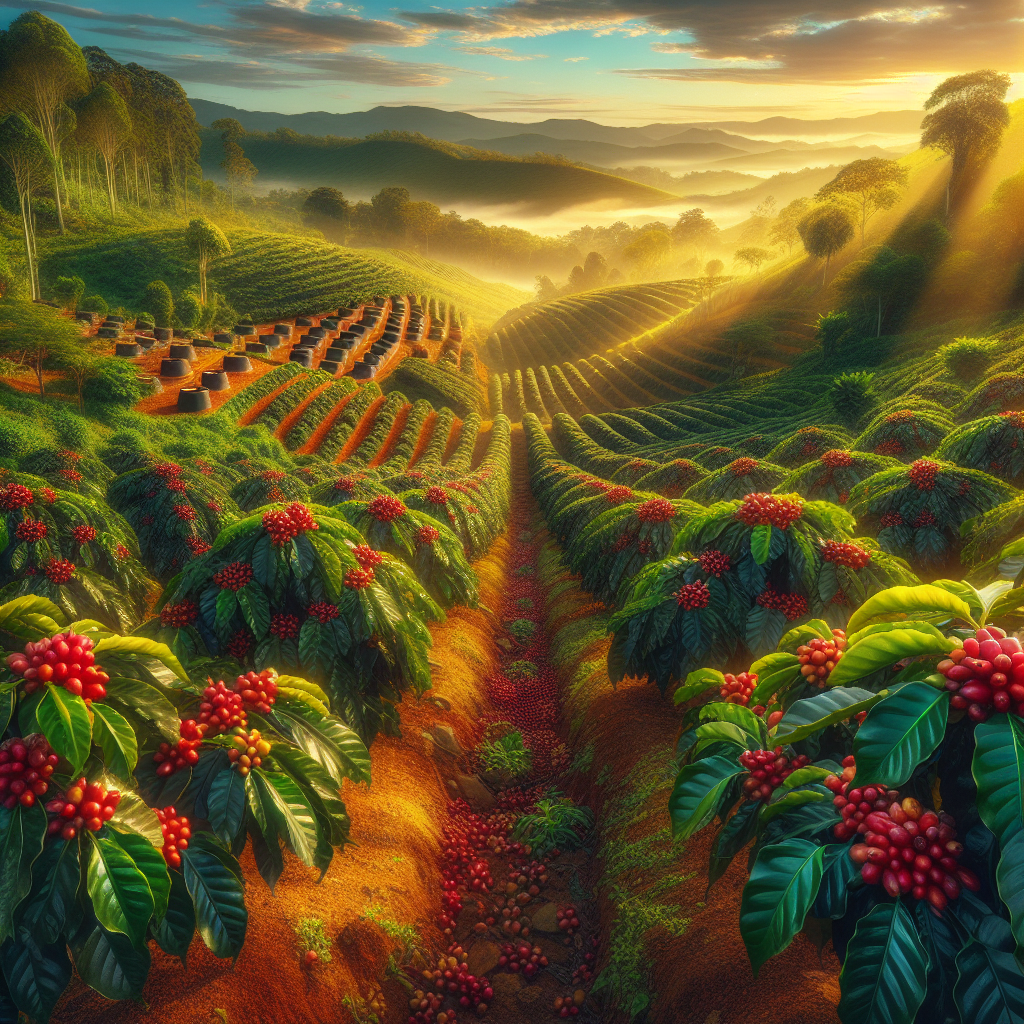The Environmental Impact of Robusta Coffee Cultivation: Sustainable Practices and Challenges
## 1. Introduction to Robusta Coffee
Robusta coffee, scientifically known as Coffea canephora, stands as a robust and resilient counterpart to Arabica coffee. This variety is known for its strong, bold flavor and higher caffeine content. Unlike Arabica, which boasts a sweeter, more nuanced flavor profile, Robusta’s taste is often described as earthy, woody, and sometimes slightly bitter.
Historically, Robusta coffee has played a significant role in the global coffee market. Its origins trace back to central and western sub-Saharan Africa, and today, it is predominantly cultivated in regions like Vietnam, Brazil, and Indonesia. The hardiness of Robusta plants makes them more resistant to pests and diseases, flourishing in lower altitudes and harsher climates.
Beyond its rugged charm, Robusta coffee offers various health benefits. It contains higher levels of antioxidants and chlorogenic acids, which contribute to its reputed health-promoting properties. This blend of resilience, bold flavor, and health benefits makes Robusta a popular choice among coffee aficionados.
Environmental Impact of Robusta Coffee Cultivation
2. Flavor Profile and Characteristics of Robusta Beans
The flavor profile of Robusta coffee is distinctly different from that of Arabica. Notable for its strong and bold flavor, Robusta has a unique taste that can include grainy or rubbery overtones, earning it descriptors like earthy and woody. This intense flavor is primarily due to its higher caffeine content, which also gives it an extra kick that many coffee drinkers appreciate.
Robusta beans are generally larger and rounder compared to Arabica beans, and they are recognized for their robustness both in physical appearance and taste. In terms of acidity, Robusta tends to have higher levels, contributing to its complex and multifaceted flavor experience. These beans are also integral in producing the signature crema in espresso, lending body and richness to the coffee.
3. Cultivation and Production of Robusta Coffee
Robusta coffee accounts for approximately 45% of the world’s coffee production, thriving in lower altitudes and tolerating a range of climatic conditions. Ideal growing conditions for Robusta include warm temperatures and well-drained, fertile soils. Unlike Arabica, which is more susceptible to pests and diseases, Robusta’s resilience allows it to flourish with fewer interventions.
Nevertheless, cultivating Robusta coffee comes with its challenges. Farmers often face issues related to sustainable farming practices, pest control, and market fluctuations. However, adopting sustainable farming techniques can mitigate some of these challenges, ensuring a more environmentally friendly and economically viable production process.
4. Environmental Impact of Robusta Coffee Cultivation
The cultivation of Robusta coffee has significant environmental impacts, particularly concerning land use, water consumption, biodiversity, and climate change. Land use changes, often involving deforestation, can lead to habitat loss and reduced biodiversity. Water usage for Robusta cultivation, especially in water-scarce regions, can strain local ecosystems.
The impact on biodiversity is another critical factor, as monoculture practices can lead to a decline in local flora and fauna. Additionally, the carbon footprint of Robusta coffee cultivation, though lower than that of Arabica, still contributes to global greenhouse gas emissions. With climate change affecting weather patterns and growing conditions, the future of Robusta coffee cultivation may face additional hurdles.
5. Sustainable Practices in Robusta Coffee Cultivation
To mitigate the environmental impact of coffee cultivation, various sustainable practices are being adopted. Shade-grown coffee, for example, helps preserve biodiversity by maintaining a more natural ecosystem. Organic farming methods reduce the reliance on chemical fertilizers and pesticides, benefiting both the environment and consumers.
Ethical sourcing and Fair Trade practices ensure that farmers are fairly compensated for their work, encouraging sustainable farming practices. Various farms have successfully implemented these practices, serving as models for others. However, challenges persist in shifting to sustainable methods, often requiring significant investment and community involvement.
6. Future Challenges and Directions for Robusta Coffee Cultivation
As demand for coffee continues to rise, the cultivation of Robusta coffee will face various challenges and opportunities. Consumer preferences are shifting towards more sustainable and ethically sourced products, influencing farming practices. Technological advancements in coffee growing and processing can also contribute to more efficient and sustainable production.
Education and training programs for farmers play a crucial role in promoting sustainable practices. Additionally, policy and regulatory frameworks can support these efforts, providing incentives for sustainable cultivation. Ongoing research into improving the resilience and yield of Robusta coffee plants will further enhance the sustainability of coffee production.
The global economic landscape will also impact the future of Robusta coffee, with shifts potentially affecting market dynamics and cultivation practices. Despite these challenges, the future direction of Robusta coffee cultivation holds promise, with a continued emphasis on sustainability and environmental stewardship.
7. Conclusion
The cultivation and production of Robusta coffee present both challenges and opportunities for sustainable practices. From its bold flavor profile and higher caffeine content to its resilience in diverse growing conditions, Robusta coffee holds a unique place in the global coffee market. However, the environmental impacts of its cultivation cannot be overlooked.
Sustainable farming practices, including shade-grown coffee, organic farming, and ethical sourcing, offer viable solutions to mitigate these impacts. As the coffee industry continues to evolve, a focus on sustainability and community involvement will be crucial in ensuring the future of Robusta coffee cultivation.
To ensure a responsible coffee consumption journey, consider exploring other coffee varieties and sustainable practices here. By supporting sustainable coffee brands and participating in local sustainability initiatives, consumers can play a pivotal role in promoting environmental stewardship in the coffee industry.
Shop at Breville now!
https://breville.oie8.net/oqDqrE
Shop RobustaCoffee Beans at Amazon now!
Click here





